Exploring the Fascinating Kumbh Mela in Prayagraj
Introducing Prayagraj: A City of Historical Significance
Prayagraj, a city that beautifully straddles the past and the present, is a name steeped in history. While the city's name change from Allahabad to Prayagraj stirred quite a conversation, it's the rich cultural tapestry and intriguing past that truly command attention. Sitting right at the confluence of three sacred rivers—the Ganges, Yamuna, and the mythical Saraswati—this location isn't just geographical; it's deeply spiritual. The Sangam, as this spot is known, is revered across Hindu traditions due to its mythological connotations of being a meeting point of divine powers. A city pulsating with stories, each corner of Prayagraj has something to say—from its fort built by Emperor Akbar to the colonial architecture lining its streets. Venture here, and you won't just be stepping into a city; you'll be walking through the annals of history.
The Magic of Kumbh Mela
The Kumbh Mela isn't just any festival; it's a spectacle. Known as one of the largest gatherings of humanity, this event is a spiritual melting pot where millions come to purify themselves in its sacred waters. Labeled as a UNESCO Intangible Cultural Heritage of Humanity, the Kumbh Mela isn't just about the grandeur of its scale; it's about the essence of unity and shared spirituality. The roots of this ancient practice can be traced back to the Hindu legend of the Samudra Manthan, where the gods and demons fought over a pot of nectar, believed to grant immortality. This tale gives birth to the incredible phenomenon witnessed every 12 years across four cities, with Prayagraj being the grandest of hosts. But what makes the Kumbh Mela so alluring is its blend of rituals, chants, and the colorful life where ascetics mingle with adventuring travelers.
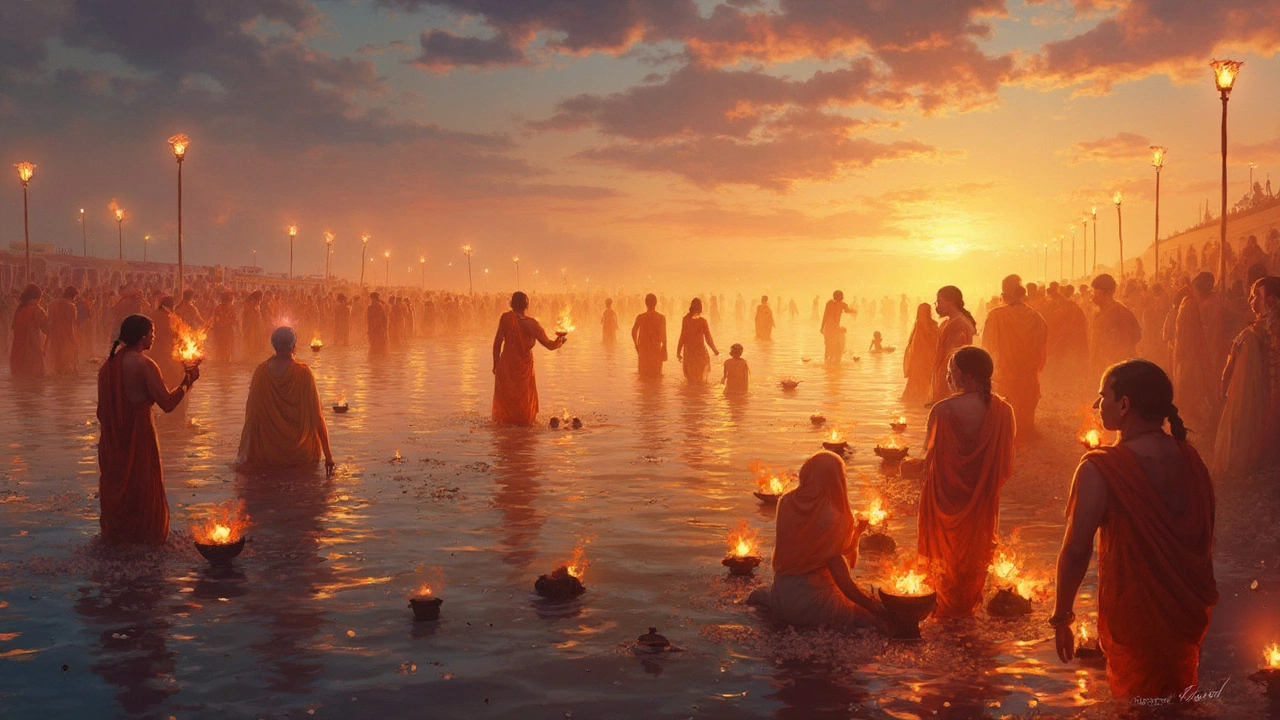
Experiencing the Kumbh Mela: What to Expect
Attending the Kumbh Mela is not just a trip; it's an experience of a lifetime. Picture this: the day starts with the rhythmic sounds of temple bells, and the air is saturated with the scent of incense and the hum of devotional chants. As you wander through the tents and temporary settlements, you'll encounter sadhus covered in ash engaging in meditative practices or simply sharing wisdom. The ghats—especially the one at the Sangam—are where the magic happens. Devotees queue to take a holy dip, believing it cleanses their sins, and the sight of saffron-robed ascetics sidling down to the river is truly a spiritual tableau. But beyond the rituals, the Mela is also a carnival of sorts with stalls selling everything from food to religious trinkets, and cultural performances that recount ancient stories. Remember to carry comfy shoes and a wide-brimmed hat—the Mela demands a lot of walking and shade-hunting.
Some Tips for Visiting Prayagraj During Kumbh Mela
Visiting during the Kumbh Mela can be a whirlwind, so here's a cheat sheet for a smoother experience. First off, plan in advance, especially regarding accommodations, as hotels and guesthouses fill up fast. Look for stays near the event sites to save time and energy. Public transport can be busy, but it's part of the adventure; just ensure you have a map or a digital guide with you. Keep your possessions secure, travel light, and be ready to mingle—strangers here often turn into friends. Engage with local guides—they might just share a legend or a hidden spot away from the bustle. And when it comes to photography, yes, capture the moments, but remember some ascetics and events might prefer to remain off the grid—ask before clicking. Lastly, immerse yourself. Whether it's a shared meal, witnessing a kirtan, or simply watching the rituals unfold, the Kumbh Mela is all about being part of something bigger than oneself. Leave the city with memories, not just photographs!
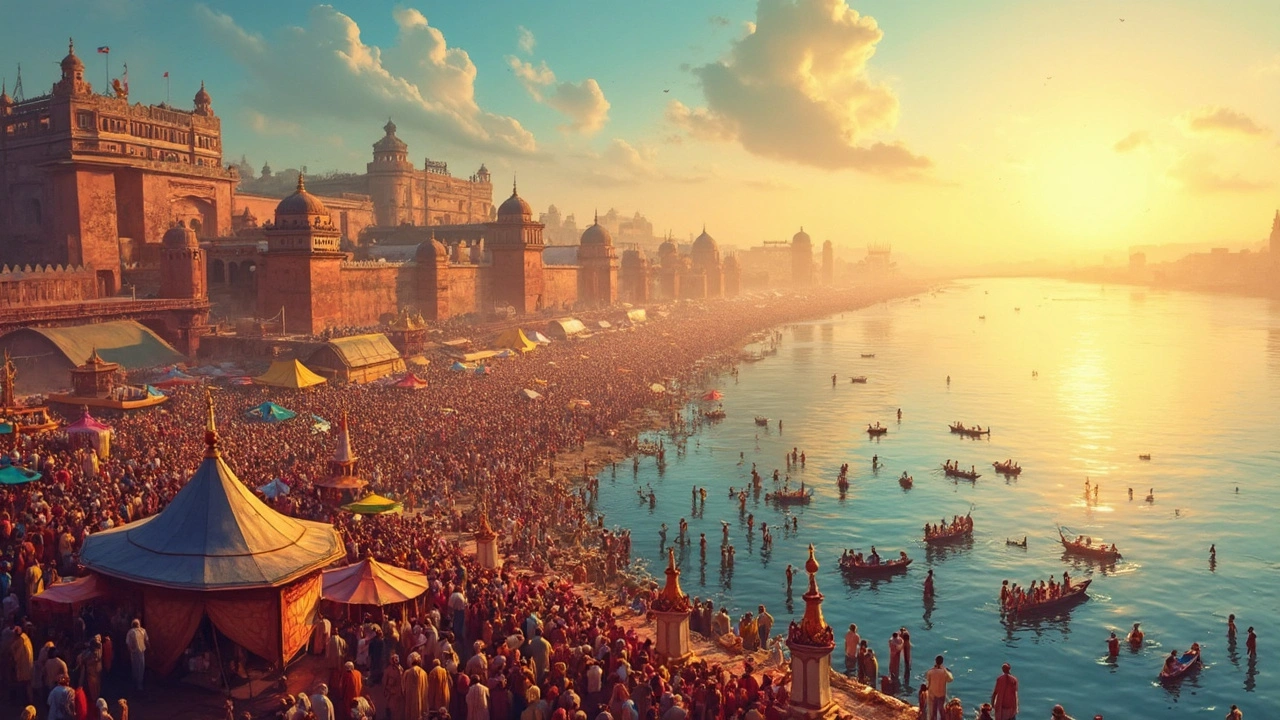

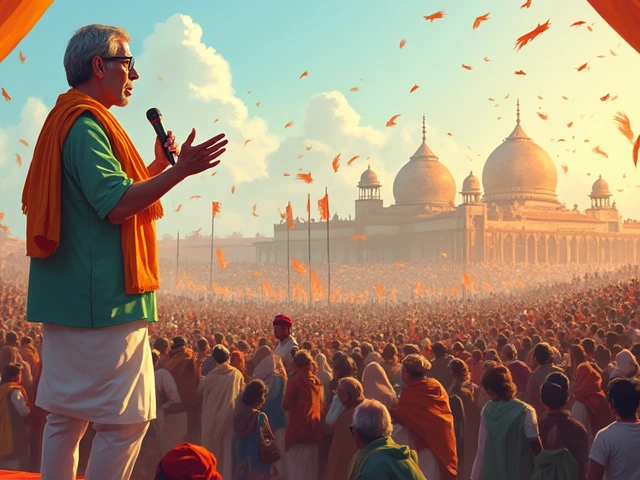
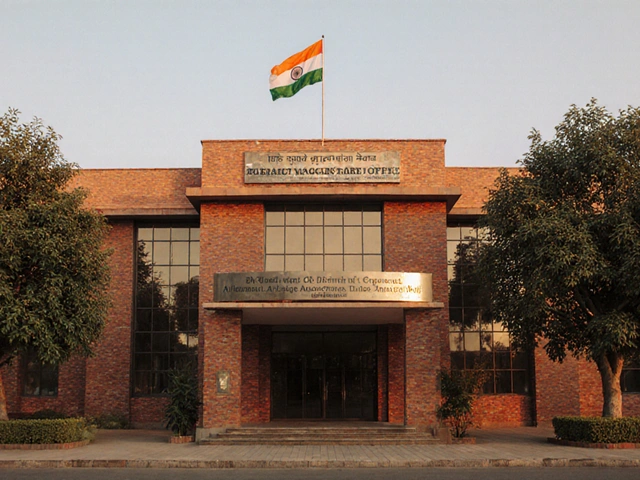

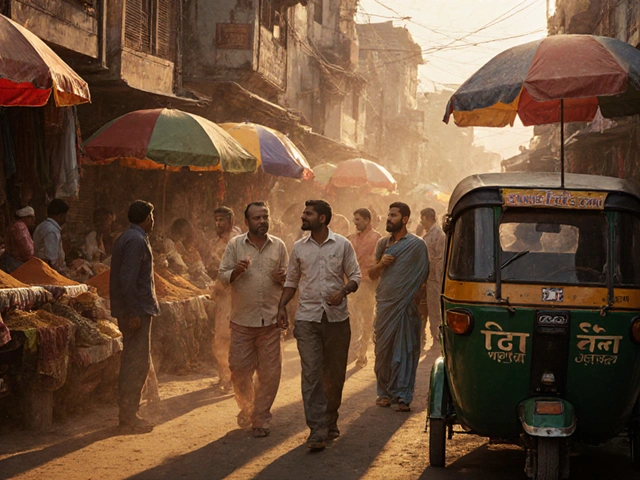
10 Comments
OONAGH Ffrench
July 18 2025The Kumbh Mela in Prayagraj is indeed a remarkable spectacle, blending centuries-old traditions with a spiritual fervor that's almost palpable. The way millions of souls come together in peaceful congregation for this event truly speaks to the deep human yearning for connection and transcendence.
It's interesting how the festival cycles through the rivers, creating a natural pilgrimage map across India. Visiting a gathering of this scale must be overwhelming yet transformative, especially witnessing the rituals performed at the confluence of rivers, which symbolizes the union of divine energies.
For prospective visitors, I would recommend embracing patience and mindfulness, given the vast crowds. It's less about rushing through the event and more about absorbing the atmosphere with a quiet heart. Cultural sensitivity and respect towards the practices observed are paramount as well.
Has anyone here managed to attend the Kumbh Mela? Any special insights or practical advice for first-timers would be invaluable.
Wilda Mcgee
July 18 2025Love this post! The Kumbh Mela sounds like this absolutely breathtaking fusion of culture, spirituality, and human spirit. The description really ignited my curiosity about how the rituals intertwine with local traditions and the sheer scale of participation.
I've read that the festival also fosters a sense of unity and harmony among diverse groups, which is such a vital message in today's world. For travelers, soaking in this vibe seems like an incredible way to expand one's perspective.
On a more practical level, keeping hydrated and wearing comfortable shoes would be top of my list when planning a visit. Also, I'm guessing that early planning is essential given the massive influx of people.
Do any of you know how the local community adjusts during this time? It must be both a busy and vibrant time for them.
Chris Atkins
July 18 2025This is a fantastic spotlight on one of the world’s most amazing gatherings. The Kumbh Mela in Prayagraj really encapsulates an intense cultural heritage and spiritual depth that’s hard to fathom remotely.
If you haven’t experienced it firsthand, it’s tough to grasp the energy and devotion flowing through the crowds, especially during the sacred dips in the river. It’s one of those rare global events where tradition meets devotion on such a colossal scale.
One interesting thing: the mela doesn’t just draw locals but people from across the globe, so it becomes this brilliant cultural melting pot. The hospitality of the local residents is genuinely something to admire.
Has anyone here noticed the environmental challenges this event faces? Managing millions must be a logistical feat.
Jen Becker
July 18 2025Honestly, I get all the spiritual hype, but with millions of people packed together at Prayagraj, it’s a bit of a nightmare zone, right? Like, the chaos must be intense and the whole thing can’t be as peaceful as it’s painted.
Plus, with so many people, there’s gotta be security issues, sanitation problems, and tons of discomfort. I mean, sure, the rituals are fascinating but I’m just not sold on the mega event vibe.
I’d be way more into smaller, quieter spiritual experiences. Stuff the crowds, man.
Does anyone else feel like these mega festivals are more about spectacle than genuine spirituality?
Ryan Toporowski
July 18 2025Hey folks 🌟 What an awesome post to dive into! The Kumbh Mela is an epic event that blends faith, culture, and an enormous human spirit. Can you imagine witnessing millions come together in prayer and celebration? Truly mind-blowing!
I’ve seen some documentaries about it, and the visuals of the mass bathing rituals are just stunning. Definitely a bucket-list experience for anyone craving to connect with something bigger.
Taking care of yourself there is crucial though – hydration, wearing comfy attire, and keeping a positive mindset do wonders.
Any of you planning to attend next time? Would love to hear what you’re most excited about 😊
Samuel Bennett
July 19 2025Well, the post is informative but I can't help thinking about how these big events are handled from a factual angle. The Kumbh Mela might be massive, but how proper are the facilities really? Sanitation observed during the festival often falls short, which is concerning given the millions attending.
Also, the crowds make me skeptical about how authentic the experience even is for most attendees who are just swept up in the spectacle.
I wonder if the spiritual significance gets lost amidst the logistical chaos — though I admit the cultural aspect is undeniably rich.
Does anyone have any information about how authorities manage health and safety there?
Rob D
July 23 2025Look, I've studied massive events and the Kumbh Mela is a prime example of cultural endurance. It's not just about spirituality, it's a celebration of Indian heritage on an unprecedented scale. Some might underestimate it, but the organizational efforts for this are colossal.
To critics who claim it's chaotic, I say they don't appreciate the discipline and long-standing traditions executed flawlessly despite the headcount.
Honestly, this festival holds a mirror to India's vast diversity and historical wealth. If you dismiss it just because it's large or noisy, you miss the point entirely.
I'm curious what outsiders think after experiencing it in person.
Franklin Hooper
July 26 2025While I respect the cultural figures, I find myself questioning the actual spiritual layering people attribute to Kumbh Mela. Often, such massive events serve as tourist traps more than genuine religious gatherings. The pomp sometimes overshadows the purity.
The post could have been strengthened by digging into the historical evolution of the festival beyond the surface appeal.
That said, it's undeniable the event has a strong magnetism on people's psyche, drawing millions willingly. The human behavior in such communal settings is a rich subject for analysis.
Anyone watching this from an academic perspective might agree.
Jess Ciro
July 29 2025Honestly, I feel like the glamour of Kumbh Mela hides a lot of uncomfortable realities. There are rumors of commercial exploitation, crowd mismanagement, and spiritual dilution. It seems more like a media circus nowadays.
And yeah, sure it’s big and colorful but do people really connect or just follow the trend to post pictures?
I guess I’m just pretty jaded about these mega spiritual gatherings turned tourist shows.
Anyone else think these events have become more about spectacle than substance?
saravana kumar
July 31 2025Being from India and having witnessed the Kumbh Mela in Prayagraj, I must say it is an immense experience beyond mere spirituality. The scale of devotion is overwhelming, yet you won't find a better example of India's rich cultural mosaic.
Yes, there are challenges — crowd control, infrastructure strains — but these are part and parcel of hosting one of the world's largest gatherings. The government and local organizers continuously strive to improve every iteration.
If you ever plan to visit, approach with respect and an open mind. The energy, rituals, and communal harmony you witness are unforgettable.
It's not just a festival; it's a cultural phenomenon bridging past and present.